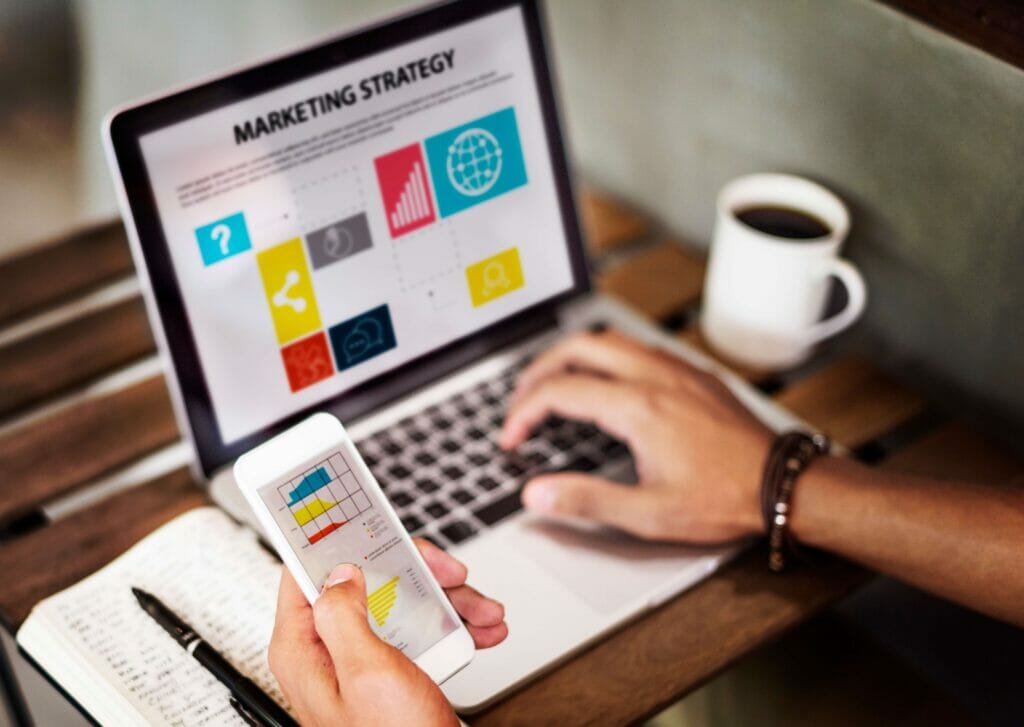Marketing
What is Brand Activation in Marketing
The Power of a Brand Activation Campaign
If you’ve been around the marketing and branding world for a while, you’ve probably heard all sorts of industry terms and buzzwords that sometimes lose their value.
Marketing is constantly evolving, which means industry trends and tactics are always popping up with many new strategies worth exploring and implementing into your business.
One of these new terms is brand activation, which may seem like another idea that people throw around and doesn’t matter.
However, as you dig further into the topic and the process, you quickly realize that this is a necessary procedure that your organization is probably doing – and could do better.
This article will cover the following:
- What is brand activation?
- Why is brand activation necessary?
- Types of brand activation
- Brand activation tips
What is Brand Activation?
There are many associated terms for branding, and no doubt many come to mind right now. But is brand activation one of them? Maybe it is, but you most likely want to understand this term better if you’re reading this section.
If you work in marketing, you know it is essential to find better ways to build trust and personalization between brand and audience. This is precisely where brand activation plays a key role.
Here’s how we can define brand activation:
Specific campaigns, events, or interactions directly impact your company’s brand. The overall goal is to create much greater awareness and build trusted relationships with your target audiences – prospects, customers, and employees.
This may sound similar to other terms in the branding space, and you would be right to think so. There is certainly overlap between these terms and any brand strategy, which generally involves building awareness and better connections with audiences.
The best way to differentiate and understand brand activation is to always focus on a specific experience that enhances your brand.
That is, your brand activation campaigns should ensure that your brand is growing – not just maintaining a particular state of being. And to ensure that your target audiences take more action after launching specific brand activation campaigns.
Why is Brand Activation Essential?

Any process or strategy that affects your company’s brand is important. Whether your brand is entirely new to audiences or has an established presence, these activation methods generate brand awareness and ensure your company remains more than relevant.
Why should people care about your brand, products, or services? What grabs their attention and creates good engagement marketing? How do you ensure your business grows and your brand stays ahead of the economic times?
It’s one thing to showcase your brand, but letting people experience it and build a connection takes your brand results to the next level.
It also helps your company address issues that may not be working and allows for critical feedback, which is a linchpin for your brand’s direction.
The Essential Types of Brand Activation
How does a company activate its brand awareness?
Remember, the brand activation strategy is more about specific campaigns based on specific goals to achieve the desired outcome related to your product or service. This means that planning, setting up, and launching will likely require more work than other marketing tactics.
However, just like most marketing strategies and plans, brand activation still has different types and creative elements that you can incorporate.
Let’s take a look at some of the common types of activation your company may want to consider.
Experiential Marketing:
The goal of experiential marketing is to allow people to experience your company and products personally and emotionally. These campaigns will enable the audience to interact with the company’s employees and test the products or services. Such activity will forge lasting emotional connections.
Experiential marketing is where creativity becomes key because you want people to have the best brand experience possible. These campaigns take time to set up and won’t be the things you traditionally do all the time.
However, these are ways to attract attention while delivering a dynamically activated brand message.
Digital campaigns:
Some digital campaigns are continually being executed with your company’s marketing team. Many of them have specific goals to achieve.
However, there will be much larger and more specific campaigns that focus on the online experience with brand activation. After all, most people today are online and on social media and want to engage with brands and people who work at those brands.
Most digital campaigns will add to the larger brand activation strategy, but social media can be an entirely separate part of the process.
Social media is where your brand engages with customers, employees, and the general public. This is where your brand can have a voice to share personality, mission, values, and awareness. But it can help draw attention to events, specific products, or upcoming campaigns and reach the people who matter most. Social platforms are the best way to spread your message through employees and customers connected to your brand and products or services. Amplify reach, share your voice, and increase activation.
Sampling campaigns:
One of the best ways to drive successful brand activations is to focus on “sampling campaigns.” This can be part of your in-store brand activation and includes specific tactics your team and company use to give audiences access to products or services. This can mean different things for different industries and whether your company is B2C or B2B.
Distributing samples to people is a good analog here. It offers free product trials and even beta test accounts to exclusive audiences so you can get valuable feedback while promoting word-of-mouth marketing to target audiences.
Brand activation tips

Because there are multiple types of brand activation and different creative campaigns you can run, your process may differ from other companies. However, all good brand activation campaigns have overlapping elements that stand out.
Here are some tips to consider and implement when building your brand and campaigns.
Know your audience
The last thing you want to do with your brand activations is deliver an experience that annoys or doesn’t connect with your audience. This means doing your homework on your target audiences, what segments you may need, and how those segments are grounded and engage with your brand.
It’s okay to be creative and deliver something fun, but every campaign needs to be thought about before blindly launching it. A great way to determine if a campaign idea is on the right track is to talk to some of your top customer representatives to get feedback.
Engage human emotions
You can’t escape the idea of brand empathy or humanizing your brand. Empathic branding is everywhere lately and more important than ever. People are getting used to the digital noise and are looking for humanized brand experiences and an emotional connection. Everything should read as human and engage with real emotions, whether through brand activation campaigns on social media, ads, or in-person events.
When your brand connects with your audience’s emotional expectations and reactions, you’ll find that they trust and identify more with your brand.
Audience participation and action
Every good brand activation campaign involves some form of audience participation or a way to take a specific action quickly. This is what differentiates brand activation from any traditional marketing campaign. For instance, when using custom coffee sleeves, you enable your brand to be seen while people are drinking their favorite drink every day. Engagement and audience participation don’t get any bigger than that.
If it’s a public event, get them to be part of the campaign, such as trying out your service or testing a new product.
Make sure your campaigns are connected
When you think of different brand activation campaigns, they should all serve to enhance the big picture of your brand strategy. That means each campaign should have an element that ties everything together and stays on brand.
Your company’s goal should be to develop a unified strategy where your campaigns work together to ensure that audiences receive a consistent brand message over time. The last thing you want to do is confuse your audiences with messaging and communications that are not aligned.
Listen to the campaign responses
Because your brand activations focus heavily on participation or action from your target audiences, they are key to evaluating your campaigns. You want your target audiences to trust, feel connected to, and value your brand through these activation campaigns.
By gathering insights throughout the campaign cycle, you can learn what’s working, what may have failed, and whether your goal for the campaign was met. It helps you learn and grow to ensure future brand activations are improved and work as intended.
Avoid brand exhaustion
It’s essential to get your brand messages out to the world, not to mention that setting brand activation campaigns is a must. But there’s also a fine line because if you push your campaigns and messages to the same audiences, it can quickly turn out to be bloated and lose their interest.
You’ll find engagement waning, perhaps people venting frustrations, or if you listen socially, you’ll see less positive chatter. It’s crucial to find a balance for your brand and remember that trial and error is fine when you start fresh.
A great way to test your brand activations is to segment audiences, look at geo-locations, and find a cadence that doesn’t overwhelm each group.
Brand Activation: The match that lights your brand’s light

Imagine decorating a house with strings of lights. The big moment comes at the very end when you plug them in, turn them on, and all the colors come to life. A building with LED lights on the facade. Brand activation can be likened to turning on the lights of your brand so customers can experience it in the most beautiful colors. When you activate your brand, it supports lifelong customer relationships and increases the chances of attracting new customers.
You now know how important brand activation is. Now let’s look at some different types of brand activation campaigns.
Live events
Few things can beat a live event for brand activation. There is much to suggest that events experienced first-hand are more memorable. Live events are usually planned, but they can also be spontaneous.
For example, a trade show appearance can be valuable to present your brand to potential new customers. However, a less set live environment that doesn’t directly involve brands, such as a day in a public park, can be just as attractive. The downside to live events is that they often have limited reach, and photos or videos from the event on social media don’t spread your message as well as you might think.
Partnerships
Partnering with another brand or celebrity is a unique and creative approach to activating your brand. Associating with a brand that people already trust will increase brand awareness. Influencer marketing is a shortcut through which people can also trust your brand in the marketing world.
Trend-oriented campaigns
If you are looking for good brand activation examples, watching trends and using them for an activation campaign is very effective, as long as you do it right. For instance, if environmentally friendly products are in vogue right now, you can advertise how your products contribute to greater sustainability.
A person writing a task sheet
Trend-based campaigns have one potential drawback: When they fail, they fail big. When you target consumer interest, the audience will quickly see through it if it’s just an advertising ploy. If your efforts to trend aren’t sincere, people have little desire to engage more deeply with your brand.
More tips for the success of your campaign
Now you know different campaign types for brand activation. Now let’s take a look at what you need to consider if you want your campaigns to succeed.
Be unpredictable
If your target audiences can already predict what you’re doing at an event or as part of a campaign, they won’t be very impressed with the actual implementation. So if people are expecting a free sample, you need to offer them a free sample with a great extra. If they’re expecting a promotional pitch for your brand, make it a show where you promote a specific brand ideal.
Be cost-effective; not cheap

Last but not least, make sure your brand activation campaigns are designed to be open to everyone. If an event is free or requires little to attend, it will likely attract more people. However, don’t confuse inexpensive with cheap. A brand activation won’t be convincing if you cut corners and offer little quality. Make an effort to get people excited.
One of the best ways to get your company’s name out there is through brand activation. This type of marketing has the ability to generate more awareness for your product or service, as well as increase customer loyalty and advocacy.

Barry Konkin is the founder of HotShot Coffee Sleeves. With over 30 years experience in commercial offset printing, Barry utilized his diverse printing background and creativity in developing new coffee sleeve designs that were granted Patents in both the USA and Canada. Barry’s goal is to assist businesses with brand promotion through the use of high quality custom printed cup sleeves. With an understanding of your marketing and operational objectives, Barry can recommend the ideal coffee sleeve solution for you.


